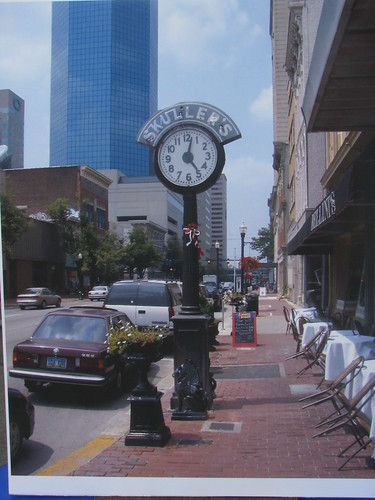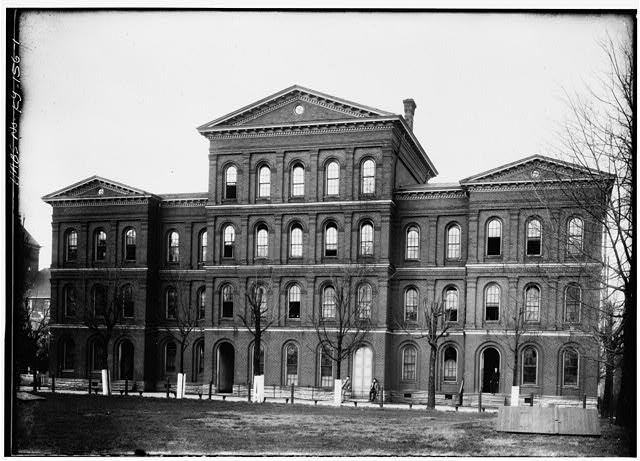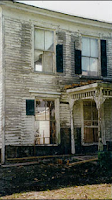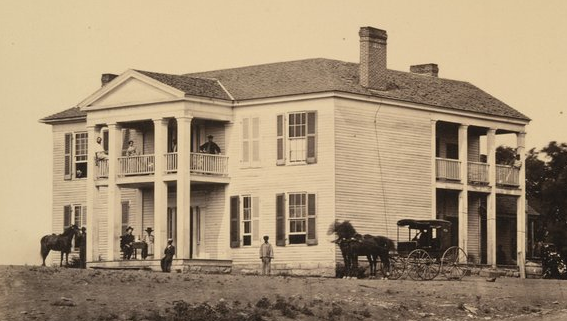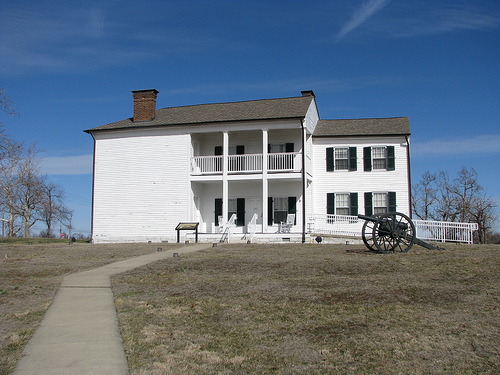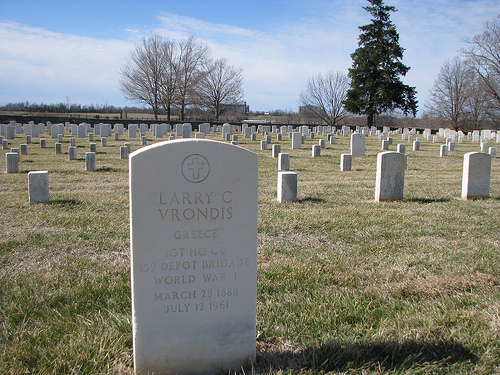 |
Headstones at Camp Nelson National Cemetery – Nicholasville, Ky.
(Photo: the Author) |
Seven score and 10 years ago, four thousand acres of southern Jessamine’s rolling farmland was commandeered by Union troops under the order of General Ambrose Burnside.
In the previous decade, Oliver Perry had constructed a home for he and his wife.
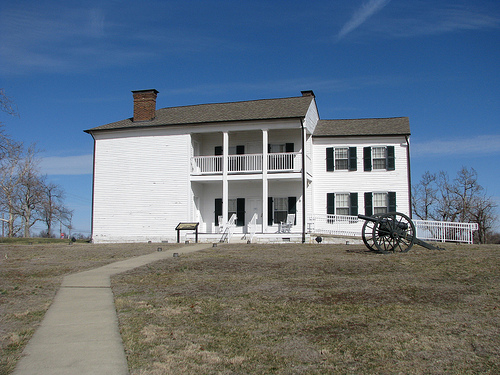 |
Oliver Perry House at Camp Nelson – Nicholasville, Ky.
(Photo: the Author) |
Their lovely white house overlooked the pike from Nicholasville. But in the middle of the Civil War, their home became the Union headquarters, third amendment to the U.S. Constitution notwithstanding. It remains as the only physical structure extant during the events that transpired here in the 1860s, with its two-story rear addition having been made during the occupation.
Perry’s mother-in-law, Mary Scott, owned much of the acreage that would be used by Union troops as Camp Nelson.
The location of Camp Nelson was ideal from a defensive perspective, being bounded on the west and south by the tall palisades over the Kentucky River.
The eastern border was met by the deep gorge cut by Hickman Creek. Only from the north was the threat of significant attack.
A series of forts were erected along this northern boundary while more than 300 structures were ultimately assembled within the bounds of Camp Nelson. It was here that Union supplies were assembled for use in conflicts near the Cumberland Gap and into Tennessee.
The camp’s utility as a supply depot was questioned in 1864 by General Ulysses S. Grant, who favored closing the facility. Others, including General William T. Sherman, favored its continued use.
Camp Nelson would become a center for enlistment of African-American troops into the Union Army, and it continued its role as a hospital. Family members of those black servicemen, as well as others of color, sought refugee status at Camp Nelson.
Refuge was found to be illegal, and 400 women and children were forced from the camp on the eve of the winter of 1864. This was the tragedy of Camp Nelson’s story as more than 100 of the refugees perished.
During occupation, two small cemeteries were utilized at Camp Nelson. Bodies placed in the one adjacent to the hospital, where victims to disease were first buried, were reinterred at cemetery number 2. This second cemetery was the first portion of what would become the Camp Nelson National Cemetery which was formally established in 1866.
Camp Nelson was designated a National Historic Landmark earlier this year. It is one of only 32 sites in Kentucky, and the only site in Jessamine County, to have such a designation. This designation is reserved for the designation of the most significant parts of our nation’s identity, and Jessamine County has long taken pride in her place in history.
Last weekend’s Civil War Days at Camp Nelson offered visitors and participants an opportunity to experience this tremendous part of our national and local history — a history now in its 150th year.
This column originally appeared in the Jessamine Journal.
It should not be republished without permission.





